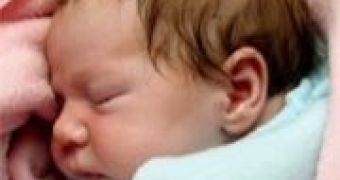Researchers at The University of Texas Medical School at Houston have discovered that toddlers with sleep apnea experience more respiratory disturbances when they sleep on their backs than in other positions.
Obstructive sleep apnea syndrome (OSAS) is a serious medical problem affecting 500,000 children every year in the United States. Pediatric OSAS is commonly caused by enlarged tonsils and adenoids and is characterized by episodes of partial or complete upper airway obstructions that occur during sleep, including snoring, cyanosis (a bluish color of the skin and mucous membranes), and poor sleep quality.
Daytime symptoms can include mouth breathing, behavior problems, hyperactivity and excessive daytime sleepiness.
Kevin D. Pereira, M.D., professor of otolaryngology at the UT Medical School and chief pediatric otolaryngologist at Memorial Hermann Children's Hospital, evaluated the association between body position and OSAS events during sleep in toddlers up to age three.
Results came from sleep studies of 60 children at the hospital between December 2001 and December 2003. The children underwent polysomnography (PSG, the continuous recording of physiologic variables during sleep) to evaluate OSAS, and later had their tonsils and adenoid tissue removed.
The PSGs were analyzed for data on the respiratory disturbance index (RDI, an index measuring respiratory events that disturb sleep), time spent in each body position during sleep, the number of apnea events in each position, oxygen saturation, and time spent in each stage of sleep.
"The mean RDI rose when more than 50 percent of the time was spent in supine (face upwards) sleep", Pereira said. "There was even more of an increase when supine sleep comprised 75 percent of the total sleep time. In fact, the RDI in this position was greater than in all other positions combined."

 14 DAY TRIAL //
14 DAY TRIAL //